1100 Aluminum Plate Sheet
Temper: H12/H14/H18/O Complete Specifications
What is 1100 Aluminum Grade?
Type 1100 industrial pure aluminum is an alloy with an aluminum content of 99.00% and cannot be strengthened by heat treatment. Its characteristics include excellent corrosion resistance, good electrical and thermal conductivity, as well as low density and excellent plasticity. Although its strength is low, various aluminum materials can be manufactured by pressure processing.
Compared with 1100 aluminum and 1050A, the 1100 type is basically similar in other process properties. Normally, type 1100 aluminum is suitable for applications that require good formability, high corrosion resistance, but not high strength, such as food and chemical handling and storage equipment, sheet metal products, drawn goods, and hollow hardware processed by spinning. , welding combination keys, reflectors and nameplates, etc.
Aluminum grade 1100 is a commercially pure aluminum alloy that belongs to the 1xxx series of aluminum alloys. It is known for its outstanding high electrical conductivity, thermal conductivity, formability, high corrosion resistance, and low strength compared to other aluminum alloys.
1100 aluminum is known as commercially pure aluminum and is the softest aluminum available. It has many excellent advantages and is well suited for many applications across multiple industries.
Aluminum 1100, also known as UNS A91100 or simply 1100, is composed of 99% aluminum and 0.12% copper.
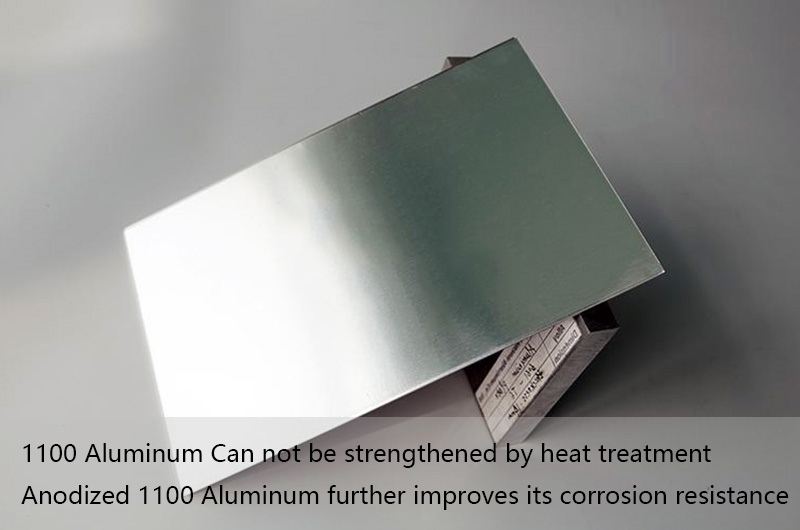
Aluminum 1100 is one of the most widely used alloys and has excellent formability properties, especially in the fully softened annealed state. It may be suitable for applications requiring bending, spinning, drawing, stamping and roll forming. It has good thermal conductivity and is commonly used in heat exchangers and heat sinks in electrical applications.
1100 aluminum alloy is common industrial pure aluminum containing 99.0% aluminum, including copper (Cu), iron (Fe), silicon (Si), manganese (Mn), and trace amounts of other impurities.
Aluminum-based alloys in the wrought series (1000 or 1xxx series). It is also the most mechanically strong alloy in the family.
-
1100 h18 Aluminum Plate Sheet
1100 h18 Aluminum This temper provides a higher level of strength than softer tempers such as H12 or H14.
-
1100 h12 Aluminum Plate Sheet
1100 h12 Aluminum offers moderate strength and good formability making it suitable for a wide range of applications.
-
1100 h14 Aluminum Plate Sheet
1100-H14 Aluminum Sheet Manufacturer Products have a smooth, uniform appearance, strictly controlled tolerances, and stable performance.
1100 Aluminum Plate Properties
- Aluminum 1100 is one of the softest aluminum alloys and therefore is not used in high strength or high pressure applications.
- It is easy to weld and braze, plus it is not heat treated and non-magnetic.
- 1100 aluminum can be anodized and given a conversion coating to further enhance properties such as corrosion resistance.
- The only 1000 series alloy commonly used in rivets.
- Advantages over other series It can be hardened by cold working, but not by heat treatment.
- It cannot be strengthened by heat treatment, and its strength is low, but it has good ductility, formability, weldability, and corrosion resistance.
- After anodizing, its corrosion resistance can be further improved, and at the same time, a beautiful surface can be obtained.
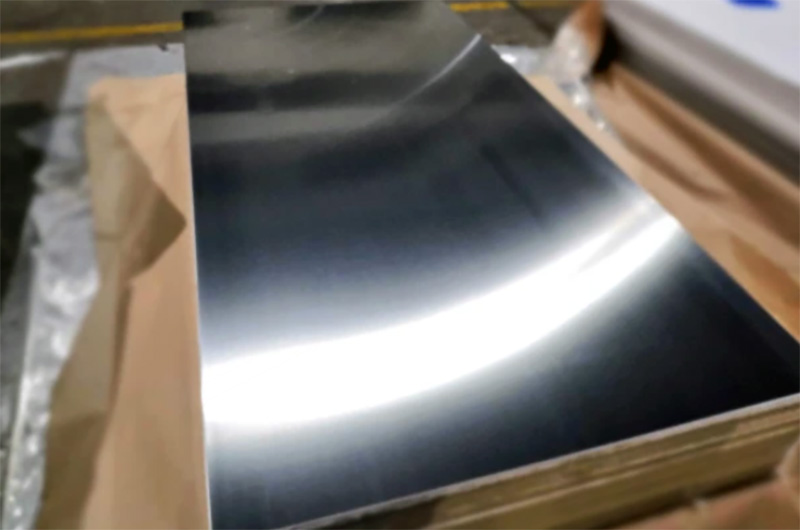
1100 Aluminum Plate Advantages
Aluminum 1100 is a commercially pure aluminum alloy that offers several advantages for a variety of applications due to its specific properties.
- 1. Excellent corrosion resistance: Aluminum 1100 has excellent corrosion resistance, making it suitable for use in environments that require exposure to moisture, chemicals or salts. This property makes it ideal for outdoor and marine applications.
- 2. High thermal conductivity: Aluminum 1100 has high thermal conductivity, which makes it an excellent choice for applications where heat dissipation is important. It is commonly used in heat exchangers and cooling systems.
- 3. Electrical conductivity: The alloy has good electrical conductivity, making it suitable for electrical and electronic applications. Commonly used in conductors and busbars.
- 4. Formability: Aluminum 1100 is highly ductile and can be easily formed, bent and molded without cracking or breaking. This makes it a popular choice for a variety of forming processes, such as rolling, extrusion and drawing.
- 5. Weldability: Aluminum 1100 is easy to weld using various methods, including TIG (Tungsten Inert Gas Welding) and MIG (Metal Inert Gas Welding). This makes it a versatile choice for manufacturers and manufacturers.
- 6. Lightweight: Aluminum 1100 is a lightweight material that offers advantages in applications where weight reduction is required. It is frequently used in the aerospace industry and in the manufacture of lightweight structures.
- 7. Reflectivity: Aluminum 1100 has high reflectivity for both visible light and thermal radiation, making it suitable for applications such as reflective signage, lighting fixtures and solar reflectors.
- 8. Non-toxic and recyclable: Aluminum 1100 is non-toxic and fully recyclable. It can be recycled over and over again without losing its properties, making it an environmentally friendly choice.
- 9. Cost-Effectiveness: 1100 aluminum is generally more cost-effective than some other aluminum alloys with specific properties, making it a first choice for applications that don’t require high strength or special properties.
- 10. Appearance: When properly treated, 1100 aluminum has a bright reflective surface, making it aesthetically pleasing in a variety of decorative and architectural applications.
1100 aluminum similar grades
- International standard: Al99.0 (ISO)
- Japanese Standard: Al100/Al00 (JIS)
- European Standard: EN AW 1100 (EN)
- French standard: A45
- Canadian Standard: 990C (CSA)
- American Standard: 1100 (AA)
1100 aluminum is widely used in deep drawing products such as capacitors due to its good processing and formability and corrosion resistance. When 1100 aluminum is used as an aluminum capacitor casing, in order to maintain excellent performance and have a certain strength, it is often in the H14 state. During the deep drawing process, the anisotropy of the material causes obvious peaks and troughs on the mouth of the deep drawing cup, which are called lugs.
In 1100 alloy, by increasing the hot rolling homogenization temperature and increasing the hot rolling final rolling temperature, the billet structure can reach a completely recrystallized state, providing a smaller nucleation center for subsequent finished product annealing, which is beneficial to reducing the lug production rate. At the same time, appropriately increasing the Fe content, reducing the Si content and increasing the processing rate are beneficial to reducing the ear production rate.
1100 Aluminum Data Sheet
1100 Aluminum Plate Specification
- Common Thicknesses: 0.2 mm - 6.0 mm
- Common Widths: 100mm - 1600mm
1100 Aluminum Typical Temper
| State | Description |
|---|---|
| 1100 H14 Aluminum Plate | Strain-hardened and partially annealed |
| 1100 H18 Aluminum Plate | Strain-hardened and fully annealed |
| 1100 O Aluminum Plate | Annealed |
Note: "H14" and "H18" states refer to different degrees of strain hardening, where the numbers represent the degree of hardness achieved by the process. The "O" temper indicates the fully annealed temper, which is the softest and most ductile state of the alloy.
If you have any more specific questions or need more information, please feel free to ask!
1100 Aluminum Plate Surface Treatment Types
| Surface Treatment | Description |
|---|---|
| 1100 Mill Finish Aluminum Plate | Unfinished/raw aluminum surface |
| 1100 Anodized Aluminum Plate | Electrochemical process to create a protective oxide layer |
| 1100 Powder Coated Aluminum Plate | Application of dry powder for a decorative and protective finish |
| 1100 Painted Aluminum Plate | Application of liquid paint for aesthetics and protection |
These finish options can enhance the appearance, durability, and corrosion resistance of 1100 aluminum. The choice of treatment depends on the specific application and desired properties.
1100 Aluminum Plate Product Certifications
Depending on the specific manufacturer and application, 1100 aluminum can comply with various certifications such as
- ISO 9001 (Quality Management System)
- ISO 14001 (Environmental Management System)
- RoHS (Restriction of Hazardous Substances).
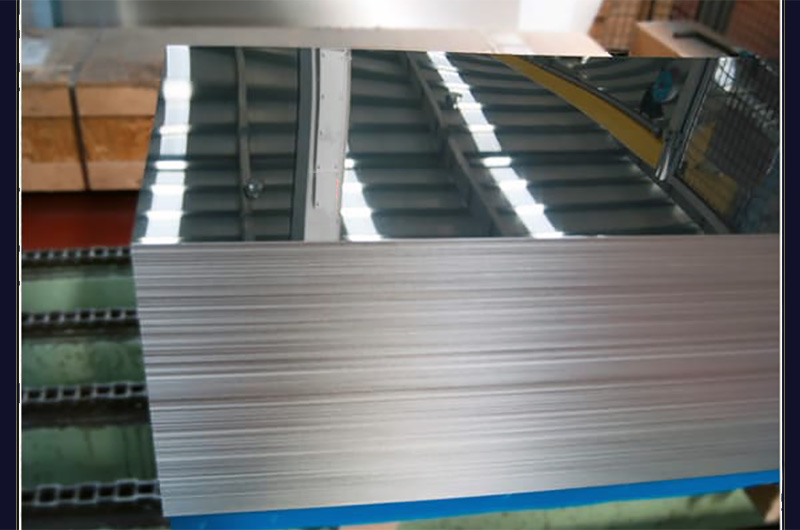
1100 Aluminum Plate Production Standards
- ASTM B209 (Standard Specification for Aluminum and Aluminum-Alloy Sheet and Plate)
- EN 485 (European Standard for Aluminum and Aluminum Alloys - Sheet, Strip, and Plate)
- JIS H 4000 (Japanese Industrial Standard for Aluminum and Aluminum Alloys - Plate, Sheet, and Strip)
- Equivalent to 1100 Aluminum
- AA1100 (Aluminum Association designation)
- UNS A91100
- Al99.0Cu
Please note that specific requirements and availability may vary among manufacturers and suppliers, so it's always advisable to consult the relevant specifications provided by the manufacturer or supplier when considering the use of 1100 aluminum in a particular application.
Aluminum 1100 Mechanical Properties
| Alloy Temper | Specified | Tensile strength | Yield strength | Elongation |
| Thickness(in.) | (ksi) | (ksi) | (%) | |
| 1100-O (annealed) | 0.006-0.019 | 11.0-15.5 | Min3.5 | Min15 |
| 0.020-0.031 | Min20 | |||
| 0.032-0.050 | Min25 | |||
| 0.051-0.249 | Min30 | |||
| 0.250-3.000 | Min28 | |||
| 1100-H12/1100-H22 | 0.017-0.019 | 14.0-19.0 | Min11.0 | Min3 |
| 0.020-0.031 | Min4 | |||
| 0.032-0.050 | Min6 | |||
| 0.051-0.113 | Min8 | |||
| 0.114-0.499 | Min9 | |||
| 0.500-2.000 | Min12 | |||
| 1100-H14/1100-H24 | 0.009-0.012 | 16.0-21.0 | Min14.0 | Min1 |
| 0.013-0.019 | Min2 | |||
| 0.020-0.031 | Min3 | |||
| 0.032-0.050 | Min4 | |||
| 0.051-0.113 | Min5 | |||
| 0.114-0.499 | Min6 | |||
| 0.500-1.000 | Min10 | |||
| 1100-H16/1100-H26 | 0.006-0.019 | 19.0-24.0 | Min17.0 | Min1 |
| 0.020-0.031 | Min2 | |||
| 0.032-0.050 | Min3 | |||
| 0.051-0.162 | Min4 | |||
| 1100-H18/1100-H28 | 0.006-0.019 | Min22.0 | – | Min1 |
| 0.020-0.031 | Min2 | |||
| 0.032-0.050 | Min3 | |||
| 0.051-0.128 | Min4 | |||
| 1100-H112 | 0.025-0.499 | Min13.0 | Min7.0 | Min9 |
| 0.500-2.000 | Min12.0 | Min5.0 | Min14 | |
| 2.001-3.000 | Min11.5 | Min4.0 | Min20 |
Note: Values provided are approximate and may vary due to factors such as specific manufacturing processes, test methods, and supplier specifications. It is always advisable to consult the manufacturer or supplier for exact and up-to-date mechanical property values for a particular batch or Aluminum 1100 product.
1100 Aluminum Plate Chemical Composition
| Element | Percentage Range |
|---|---|
| Aluminium | 99.0 - 99.95% |
| Copper | 0.05 - 0.20% |
| Iron | 0.95% max |
| Manganese | 0.05% max |
| Silicon | 0.95% max |
| Zinc | 0.1% max |
| Residuals | 0.15% max |
1100 Aluminum Plate for Sale
1100 h14 Aluminum Plate
- 1100 h14 aluminum plate: This means that the aluminum plate made of 1100 alloy is strain-hardened and then partially annealed. The "h14" temper provides medium strength and good formability.
- Roofing and construction applications: Due to its excellent corrosion resistance, the 1100 h14 aluminum plate is used for roofing and construction purposes, including building facades, gutters, and decorative elements.
- Heat Exchangers: The formability and thermal conductivity of 1100 h14 aluminum make it suitable for the manufacture of heat exchangers and air conditioning systems.
- Reflectors and lighting fixtures: Aluminum's high reflectivity makes it ideal for reflectors and lighting fixtures.
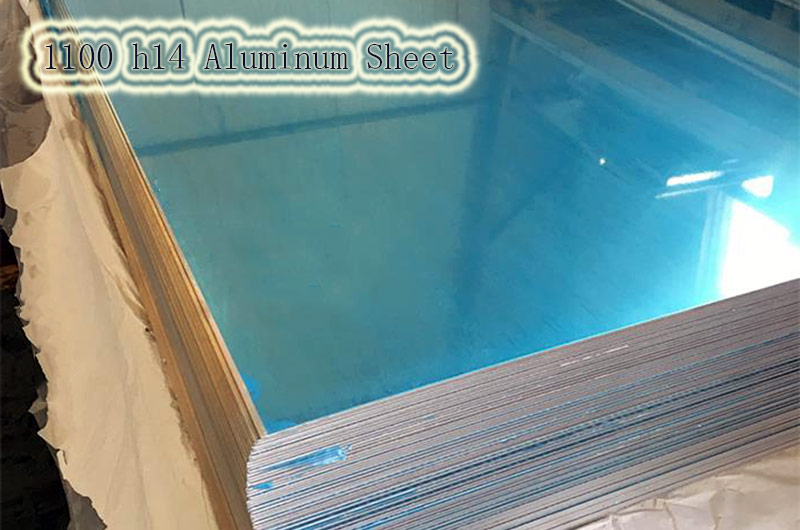
1100 o Aluminum Plate
- 1100 o aluminum plate: "o" stands for annealed, indicating that the aluminum plate has been fully annealed and is in its softest and most ductile state. The "o" condition is suitable for applications requiring extensive forming or bending.
- Packaging: The 1100 o Aluminum sheet is soft and malleable and is commonly used in packaging applications, including foil wrap, food containers, and lids.
- Electrical Conductors: 1100 o Aluminum's high conductivity makes it suitable for wires and conductors.
- Chemical and food industry: Due to its corrosion resistance, aluminum sheet in the annealed (o) condition is often used for storage tanks, pipes, and other equipment in the chemical industry.
1100 h12 Aluminum Plate
1100 h12 aluminum: In this case, the temper designation refers to the 1100 aluminum alloy in different product forms such as plate or rod. The "h12" temper represents strain-hardening material which is then subjected to a controlled amount of cold working. It provides higher strength than "o" temper.
- Heat Sinks: The increased strength of 1100 h12 aluminum makes it suitable for heat sink applications to efficiently dissipate heat from electronic components.
- Busbars: The higher strength and electrical conductivity of 1100 h12 aluminum make it suitable for busbars used to distribute power in electrical systems.
- Roof and siding: The combination of strength and formability makes 1100 h12 aluminum suitable for roofing and siding.
1100 h18 Aluminum Plate
- 1100 h18 Aluminum Plate: The "h18" status indicates that the aluminum plate made from the 1100 alloy has been strain-hardened and stabilized. This temper provides a higher level of strength than the "h14" temper.
- Chemical Equipment: Compared to h14 temper, 1100 h18 aluminum plate has higher strength making it suitable for chemical processing equipment such as storage tanks, pipes, and vessels.
- Aerospace industry: h18 temper can be used for components in the aerospace industry that require higher strength and good formability, such as aircraft parts and panels.
- Marine Applications: The corrosion resistance of the 1100 h18 aluminum sheet makes it suitable for marine applications such as hulls, fittings, and structures.
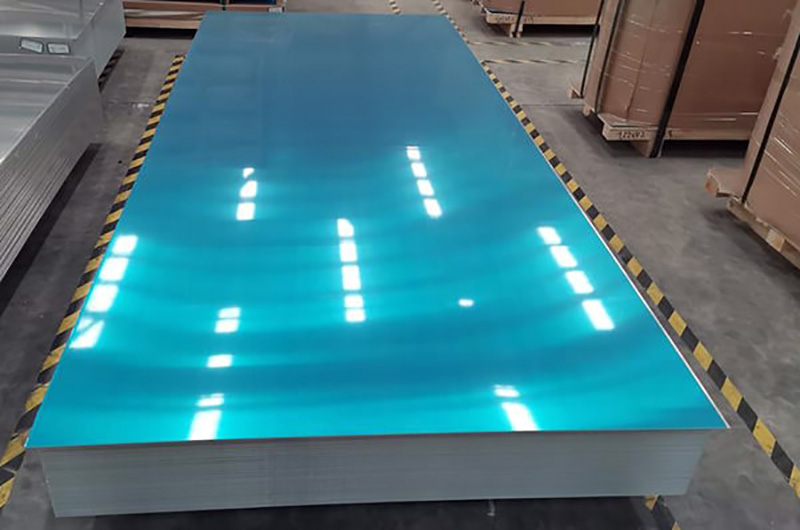
1100 Aluminum Sheet stock sizes
What is 1100 Aluminum Plate Used for?
Aluminum 1100 is typically used in applications requiring good solderability, high thermal and electrical conductivity, and chemical resistance. It is commonly used in the manufacture of heat exchangers, heat sinks, chemical equipment, reflectors, nameplates, trim, and general sheet metal parts.
| Application | Description |
|---|---|
| General Construction | Roofing, siding, gutters, architectural components |
| Packaging | Foil wraps, food containers, bottle caps, lids |
| Electrical Conductors | Wiring, power transmission lines, electrical cables, busbars |
| Heat Exchangers | Radiators, HVAC systems, heat sinks |
| Reflectors and Lighting | Lighting fixtures, reflectors |
| Chemical Industry | Chemical storage tanks, piping, equipment |
| Food and Beverage Industry | Food processing machinery, brewing equipment, kitchen utensils |
| Marine Applications | Boat hulls, fittings, marine structures |
| Signage and Nameplates | Outdoor signage, nameplates, tags |
| Reflective Insulation | Insulation materials with reflective properties |
| Chemical Equipment | Chemical storage tanks, piping, equipment |
NOTE: This table provides a list of applications in which 1100 aluminum has applications in addition to those listed. Here are some specific application examples:
- 1100 Aluminum Plate for Heat Sink
- 1100 Aluminum Plate for PCB Circuit Board
- 1100 Curtain Wall Aluminum Plate
- 1100 H24 Aluminum Plate for Bus Door
- 1100-h16 Aluminum Sheet Roll for Refrigerator Lining
- 1100 Aluminum Plate for Capacitor Shell
- 1100 Aluminum Plate for Stair Handrails
- 1100 Aluminum Plate for New Energy Charging Piles
1. 1100 Aluminum Plate for Heat Sink
The heat sink is a device specially used to dissipate heat from the heat-prone electronic components in electrical appliances. It can be made of aluminum alloy. The aluminum heat sink has high-cost performance and can be made of 1100 aluminum plates.
2. 1100 Aluminum Plate for PCB Circuit Board
From electronic watches, calculators, and general-purpose computers to large computers and communication electronic equipment, as long as there are electronic components such as integrated circuits, PCB circuit boards are used for electrical interconnection between them.
The aluminum substrate is an important component of the PCB circuit board. It usually uses 1100 aluminum plates. Its main features are high corrosion resistance, high electrical and thermal conductivity, low density, and good plasticity.
3. 1100 Curtain Wall Aluminum Plate
An aluminum curtain wall is a form of curtain wall. It is mostly used for wall shielding and non-lighting walls. It is made of environmentally friendly and energy-saving aluminum alloy material. It uses 1100 aluminum plates and 3003 aluminum plates as the base material. It has the characteristics of lightweight, good fire protection, and corrosion resistance. , widely used in the construction industry.
4. 1100 H24 Aluminum Plate for Bus Door
The lightweight of automobiles is not only reflected in important parts such as the engine, chassis, and heat exchange system, but also includes the lightweight of doors, skins, fuel tanks, steering wheels, seats, bumpers, wheels, and luggage. For bus doors, 1100 H24 aluminum plates are usually used.
5. 1100-h16 Aluminum Sheet Roll for Refrigerator Lining
An ice-lined refrigerator is a refrigerator that uses ice-lining panels to store cold. It consists of a box body, insulation layer, ice lining layer, inner tank, and compressor system installed in the lower part of the box body. Refrigerator lining panels can be produced using aluminum alloy materials. 1100 aluminum sheets have stable performance and are mostly used for refrigerator lining panels. 1100-h16 aluminum sheet coils are commonly used.
6. 1100 Aluminum Plate for Capacitor Shell
The capacitor casing is usually made of high-quality 1100 aluminum plates with an aluminum content of 99.00%. The capacitor shell is made of an 1100 aluminum plate, which has good thermal conductivity, high stability, corrosion resistance, lightweight structure, energy saving, and environmental protection, and has good economic and social benefits.
7. 1100 Aluminum Plate for Stair Handrails
The 1100 aluminum plate used for handrails has high strength, stiffness, and good processing performance. At the same time, the 1100 pure aluminum plate has good machining performance and impact resistance. Pure aluminum plate 1100 has good weldability, anti-aging, and rich raw materials. In addition, it is a pure aluminum plate, easy to process, and low cost, so it is suitable for handrail materials.
The 1100 aluminum plate used for handrails can form an oxide film in the air, which is not easy to rust and corrosion-resistant in humid environments, and has good application prospects.
8. 1100 Aluminum Plates for New Energy Charging Piles
With the popularization of new energy, there is an increasing demand for laying new energy charging piles on more and more occasions. The 1100 aluminum plate used in new energy charging piles has a significant energy-saving effect and stable and reliable performance.
Because of its softness and malleability, 1100 aluminum is not suitable for applications requiring high strength or structural integrity. However, its high versatility and excellent processability make it a popular choice for a variety of industrial and commercial applications.
1100 Aluminum Plate Processing Technology
Cold working is the most common method of forming aluminum 1100. A cold metalworking process is any metal forming or forming process performed at or near room temperature.
While 1100 aluminum is typically cold worked, it can also be hot worked, but more commonly, the aluminum is formed through spinning, stamping, and drawing processes, none of which require the use of high temperatures.
Processing steps of 1100 aluminum
1. Castings
The initial steps in processing aluminum 1100 include melting raw aluminum and casting it into various shapes, such as billets, ingots, or sheets. These shapes can then be further processed into the desired product.
2. Scroll
Aluminum 1100 can be rolled into sheets or coils through a process called rolling. This involves passing the metal through a series of rollers that gradually reduce its thickness to the desired size. This process is commonly used to make aluminum foil, metal sheets, and other flat products.
3. Squeeze
Extrusion is a method of creating complex shapes by forcing aluminum through a die under high pressure. While aluminum 1100 may not be extruded as commonly as other alloys, it can be extruded to form profiles with unique cross-sectional shapes. This process is useful for creating structural components and frames.
4. Annealing
Annealing is a heat treatment process used to improve the mechanical properties and formability of aluminum 1100. It heats the material to a specific temperature and then cools it slowly. This process helps eliminate internal stresses, increases ductility, and improves the material's workability.
5. Processing
Compared to other aluminum alloys, 1100 aluminum is relatively soft, making it easy to work. It can cut, drill, mill and turn on standard machine tools. The alloy's excellent machining properties make it suitable for use in a variety of precision components.
6. Welding
Aluminum 1100 can be welded using a variety of welding techniques, including TIG (tungsten inert gas) welding, MIG (metal inert gas) welding and resistance welding. Welding may be required to join aluminum 1100 parts or perform repairs.
7. Forming and bending
Due to its excellent formability, aluminum 1100 can be easily bent and formed into various shapes without the risk of cracking. This property makes it suitable for applications requiring forming or bending.
8. Finishing
Aluminum 1100 can be finished through processes such as anodizing, painting or powder coating to improve its appearance, corrosion resistance and durability.
9. Quality control
Throughout the processing steps, we take quality control measures to ensure that the aluminum meets the specifications and standards required for the intended application. This includes checking thickness, flatness and mechanical properties.
Frequently Asked Questions (FAQs)
1. What are the characteristics of 1100 aluminum?
The primary property of 1100 aluminum is its high corrosion resistance, which makes it ideal for applications exposed to harsh elements. It is also easy to fabricate due to its excellent formability and ability to weld, solder and braze.
2. What is the composition of 1100 aluminum?
Containing at least 99% aluminum, 1100 aluminum is considered commercially pure. The remaining 1% usually consists of trace amounts of iron, silicon (Si), and/or other elements.
3. What is the density of 1100 aluminum?
1100 The density of aluminum at room temperature is approximately 2.70 grams per cubic centimeter (g/cm3). Its relatively low density and light weight make 1100 aluminum a common choice for aerospace and other applications where a high strength-to-weight ratio is a priority.
4. How is the machinability of 1100 aluminum?
1100 aluminum is soft and ductile, making it highly machinable, making it ideal for precision drilling, cutting and forming through a variety of processes.
1050 vs. 1100 Aluminum Plate
1050 and 1100 are both commercially pure aluminum alloys with similar compositions, but there are slight differences between them. Here's a comparison of 1050 and 1100 aluminum:
Composition
- 1050 Aluminum: The 1050 alloy contains 99.5% aluminum, with trace amounts of other elements.
- 1100 Aluminum: The 1100 alloy also contains 99.5% aluminum, with trace amounts of other elements.
Properties
- Mechanical Properties: Both 1050 and 1100 aluminum alloys have relatively low strength, making them unsuitable for high-stress applications. They are primarily known for their excellent formability, weldability, and corrosion resistance.
- Electrical Conductivity: Both alloys have high electrical conductivity, making them suitable for electrical and electronic applications.
- Thermal Conductivity: Both alloys exhibit high thermal conductivity, allowing for efficient heat transfer.
- Workability: Both 1050 and 1100 aluminum alloys have good workability, enabling them to be easily shaped, formed, and fabricated.
Applications
Due to their similar properties, 1050 and 1100 aluminum alloys are commonly used in similar applications, including:
- General sheet metal work
- Reflectors and lighting fixtures
- Chemical and food industry equipment
- Packaging materials
- Heat exchangers
- Electrical conductors and wiring
- Roofing and siding
It's worth noting that the specific application requirements and industry standards may influence the choice between 1050 and 1100 aluminum. For example, 1050 aluminum is often used for electrical applications due to its slightly higher electrical conductivity compared to 1100 aluminum.
1050 and 1100 aluminum alloys are very similar in composition and properties, making them both versatile and widely used in various industries. The choice between the two may depend on specific application requirements or industry preferences.
People also searched for Aluminum Plate
-
1070 Aluminum Plate Sheet
1070 aluminum plate has the characteristics of high plasticity, corrosion resistance, good electrical conductivity and thermal conductivity, but its strength is low.
-
1060 Aluminum Plate Sheet
Haomei Aluminum strictly controls the quality of the 1060 Aluminum Plate Sheet. Has rich expertise and experience in the production of aluminum plates.
-
1050 Aluminum Plate Sheet
Haomei Aluminum has a sound quality control process to ensure consistent and reliable quality of 1050 aluminum sheets. This includes rigorous inspection and testing procedures at all stages of production to meet or exceed industry standards.
-
1050 h18 Aluminum Plate Sheet
Purchase high-quality raw materials, ensure the use of pure aluminum, and strictly control the alloy composition. This helps to guarantee the desired properties and performance of the 1050 h18 aluminum plate.
-
1050 h24 Aluminum Plate Sheet
Production Capacity: With advanced production facilities and equipment, the Aluminum 1050 h24 Sheet Plate produced is an aluminum plate with precise dimensions, a smooth surface, and consistent thickness. Capable of meeting different customer requirements, including custom sizes and specifications.
-
1050 h14 Aluminum Plate Sheet
Competitive Price: Haomei Aluminum offers competitive prices for 1050 h14 Aluminum Sheet Plates while guaranteeing high quality.
-
1060 h24 Aluminum Plate Sheet
Haomei Aluminum strictly controls the quality of the 1060 h24 Aluminum Plate Sheet and has competitive prices while ensuring product quality.
-
1060 h18 Aluminum Plate Sheet
Haomei Aluminum is a quality 1060 h18 Aluminum Plate Sheet manufacturer, ensuring that its products meet industry standards and customer expectations.
-
1060 h14 Aluminum Plate Sheet
Certification & Compliance: Possessing 1060 h14 Aluminum Sheet Plate related certifications such as ISO 9001 demonstrates our commitment to our quality management system.
-
1060 h12 Aluminum Plate Sheet
Quality Control Measures: Reliable Manufacturer of 1060 h12 Aluminum Plate Sheet ensures consistent production of high-quality Aluminum Sheet Plate.
-
1350 Aluminum Alloy
1350 Aluminum is a soft and highly ductile alloy used primarily in electrical applications where high electrical conductivity and low electrical resistance are critical.

